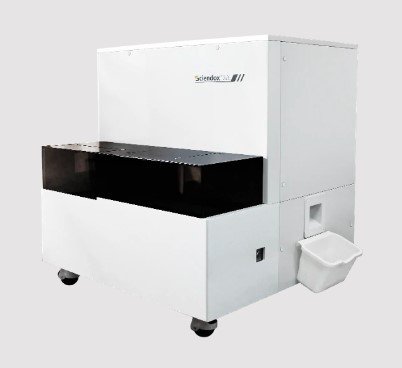Ensuring Compliance with California Proposition 65 for Medical Lab and Phlebotomy Equipment
Summary
- California Proposition 65 requires specific labeling for chemicals known to cause cancer or reproductive harm.
- All medical lab and Phlebotomy Equipment imported into the United States must comply with the Regulations set forth in Proposition 65.
Introduction
In the United States, medical lab and Phlebotomy Equipment must meet certain requirements to ensure the safety of healthcare workers and patients. California Proposition 65, also known as the Safe Drinking Water and Toxic Enforcement Act of 1986, mandates specific labeling for products containing chemicals known to cause cancer, birth defects, or other reproductive harm. This article will explore the specific requirements for lab and Phlebotomy Equipment imported into the United States in accordance with California Proposition 65.
Regulations under California Proposition 65
California Proposition 65 requires businesses to provide warnings to consumers about significant exposure to chemicals that cause cancer, birth defects, or other reproductive harm. These warnings must be included on the product packaging or displayed at the point of sale. The Regulations apply to all products sold or distributed in the state of California, including medical lab and Phlebotomy Equipment imported from other countries.
Chemicals Listed under Proposition 65
The California Office of Environmental Health Hazard Assessment (OEHHA) maintains a list of chemicals known to cause cancer, birth defects, or other reproductive harm. This list includes over 900 chemicals and is updated annually. Some common chemicals found in medical lab and Phlebotomy Equipment that are subject to Proposition 65 Regulations include:
- Lead
- Cadmium
- Mercury
- Formaldehyde
- Bisphenol A (BPA)
Requirements for Lab and Phlebotomy Equipment
Manufacturers and distributors of medical lab and Phlebotomy Equipment imported into the United States must ensure that their products comply with Proposition 65 Regulations. This includes:
- Conducting a risk assessment to determine if the equipment contains any chemicals listed under Proposition 65
- Providing clear and reasonable warnings on the product packaging or at the point of sale if the equipment poses a significant risk of exposure to these chemicals
- Updating warnings as needed to reflect changes in chemical composition or regulatory requirements
Importing Lab and Phlebotomy Equipment into the United States
When importing medical lab and Phlebotomy Equipment into the United States, manufacturers and distributors must ensure that their products comply with Proposition 65 Regulations. Failure to comply with these requirements can result in penalties and legal repercussions, including fines and product recalls. It is essential to work with reputable suppliers and manufacturers who understand and adhere to the Regulations governing the import of medical equipment.
Documentation and Compliance
Before importing lab and Phlebotomy Equipment into the United States, manufacturers and distributors must provide documentation demonstrating compliance with Proposition 65 Regulations. This documentation may include:
- Certificates of compliance confirming that the equipment meets the requirements of Proposition 65
- Testing reports from accredited laboratories verifying the absence of listed chemicals in the equipment
- Product labeling and warning information that meets the standards set forth under Proposition 65
Due Diligence and Quality Control
Importers of medical lab and Phlebotomy Equipment must exercise due diligence and implement Quality Control measures to ensure compliance with Proposition 65 Regulations. This may include:
- Regularly auditing suppliers and manufacturers to verify compliance with Proposition 65 requirements
- Monitoring changes in chemical composition or regulatory standards that may impact compliance
- Implementing corrective actions and recalls if non-compliance issues are identified
Conclusion
Compliance with California Proposition 65 is essential for manufacturers and distributors of medical lab and Phlebotomy Equipment imported into the United States. By understanding the Regulations and requirements set forth under Proposition 65, businesses can ensure the safety and well-being of healthcare workers and patients. Failure to comply with these Regulations can result in severe consequences, underscoring the importance of due diligence and Quality Control in the importation of medical equipment.

Disclaimer: The content provided on this blog is for informational purposes only, reflecting the personal opinions and insights of the author(s) on the topics. The information provided should not be used for diagnosing or treating a health problem or disease, and those seeking personal medical advice should consult with a licensed physician. Always seek the advice of your doctor or other qualified health provider regarding a medical condition. Never disregard professional medical advice or delay in seeking it because of something you have read on this website. If you think you may have a medical emergency, call 911 or go to the nearest emergency room immediately. No physician-patient relationship is created by this web site or its use. No contributors to this web site make any representations, express or implied, with respect to the information provided herein or to its use. While we strive to share accurate and up-to-date information, we cannot guarantee the completeness, reliability, or accuracy of the content. The blog may also include links to external websites and resources for the convenience of our readers. Please note that linking to other sites does not imply endorsement of their content, practices, or services by us. Readers should use their discretion and judgment while exploring any external links and resources mentioned on this blog.
